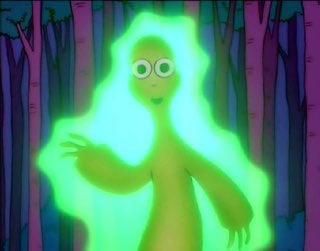https://lemmy.world/pictrs/image/329037ba-11a7-47c8-a957-713cc8abd085.png
**Soviet Claims Discovery Of Part Of Lost Continent**
IGY Exploration Report Translated
By RAY BRUNER
Blade Science Editor
Soviet scientists today have reported the discovery of a remnant of the lost continent of Lemuria, Believed by some 19th Century scientists to have sunk under the Indian ocean more than a million years ago.
The discovery was reported to have been made during the seven-month voyage of the Russian exploration ship Vityaz, as part of Soviet participation in the third International Geophysical Year.
It is possible the announcement may reopen an argument which was thought to have ended by the beginning of the 20th Century. The argument was started by the noted German zoologist Ernst Haeckel. He contended there must have been a vast land area continuous over the present Indian Ocean, Africa and the Malayan Archipelago.
Lemur Distribution
Its existence, he said, was the only way to explain the present geographical distribution of lemurs and other forms of life. Lemurs are primates lower on the scale than apes and monkeys.
After he had started the argument, fossil remains of lemurs were found in localities to discredit the German zoologist's contention, It was generally thought that this would settle the matter.
The Russian announcement, which has been translated in a report issued today by the U.S. Department of Commerce, stated that the Vityaz crossed the equator six times in voyages over the western portion of the Indian Ocean.
"Here, close to the shores of Africa, is an area of an enormous number of sunken islands," the Russians said. "They are remnants of the lost Lemuria."
Sunken Islands
The scientists probed the ocean bottom at a depth of about three miles. They found sand under a layer of ordinary ocean silt about six feet thick. This, apparently was the surface of the lost continent.
Further investigation disclosed the existence of sunken islands surrounded by coral reefs.
"The system of winds and currents in this region, the presence of submarine mountains and the island archipelagos create conditions favorable to live," the Russians stated.
They also reported discovering new deep currents and "approximately 100 types of previously unknown mammals and fish."
Extensive Elevations
They said many areas studied, which appear on maps as deep blue spots indicating great depths, revealed extensive elevations and individual mountains.
It is possible that the report of the discovery of Lemuria can be substantiated during the forthcoming intensive exploration of the Indian Ocean by 11 nations, including the U.S. and the USSR. This cooperative effort is being organized by the International council of Scientific Unions, which has its headquarters at The Hague.
The floor of the Indian Ocean is less known than the visible surface of the moon. Explorations of the floors of the world's deep water is at about the same stage as the exploration of the new world at the time of John Cabot in the 15th Century when he made his historic voyages to North America.
Myths On Atlantis
Controversies over the lost continent of Lemuria are less well known than the myths of the lost Atlantis, which is still subject of considerable speculation. Since Plato, in ancient Greece, first popularized the Atlantis legend, it is estimated that more than 5,000 books have been written about it.
While Lemuria was supposed to have sunk below the depths of the ocean before the dawn of man, the sinking of Atlantis was believed to have occurred in much more recent times.
You must log in or register to comment.

